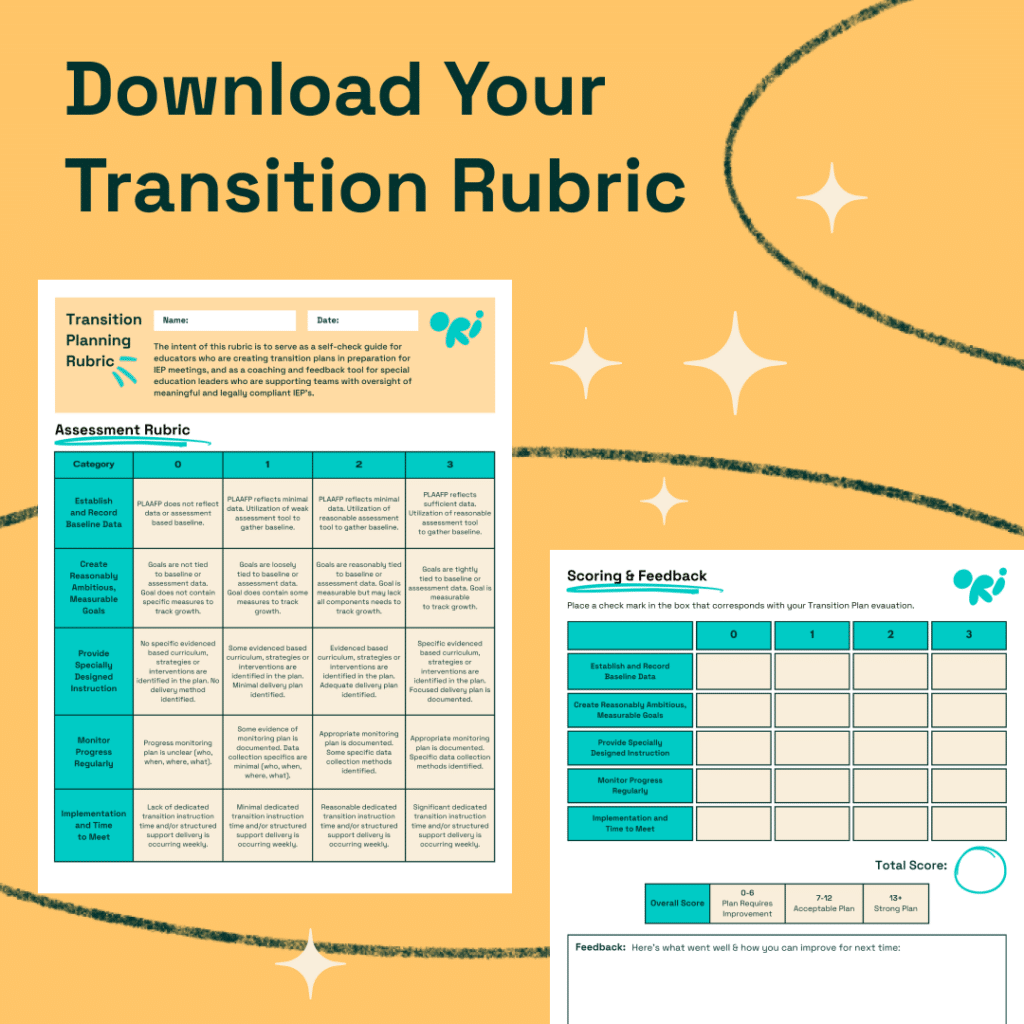


For special education directors and transition coordinators choosing the right transition curriculum can be a make-or-break moment for their school or district. It can set them on the path towards improved compliance, better student outcomes and higher teacher satisfaction. Or it can lead to unexpected costs, increased workloads and mounting paperwork.
To help make this choice easier, we’ve compiled a guide to the most important considerations that go into making this decision. From flexibility and accessibility to progress monitoring and student engagement, here are the top 5 markers of a quality transition curriculum.
As most school and district leaders are aware, the special education teacher shortage crisis shows no signs of abetting.
Professional development is often cited as one of the steps education leaders can take to address these challenges. But we also need to consider the limited time and budgets available for upskilling and reskilling teachers.
A study carried out by EdWeek and Merrimack College found that out of the – on average – 54 hours teachers spend working per week, only 1 hour is dedicated to professional development.
This means that when choosing a transition curriculum, coordinators and directors must take into account 3 key factors related to its ease of adoption and use:
On top of that, you can consider other factors such as whether the curriculum offers age-appropriate content, enough hands-on activities and multimedia to be engaging enough for teenagers.
Substantive compliance with the IDEA puts supreme importance on requirements surrounding specially designed instruction (SDI). Therefore, when selecting a transition curriculum it is crucial to consider if it is supported by peer-reviewed research and evidence-based practices and approaches.
One of the most direct routes to meeting the IDEA requirements in this area is to employ methods and practices built on proven and broadly accepted frameworks such as Universal Design for Learning and CASEL.
In addition, a number of leading organizations publish empirical research and evidence-based practices for the delivery of transition services and educational interventions. A curriculum that bases its content on such authoritative sources has a good probability of being legally compliant and consistent with best practices.
See what Ori Learning can do for your school or district.
With the rise of transition-related litigation in recent years, compliance has become a central issue for special education directors around the country. Among the most common legal pitfalls for special educators are inadequate IEP goal-setting and progress monitoring.
As cases such as the Endrew F. Supreme Court Ruling demonstrate, it’s crucial to have reliable progress monitoring systems as part of your transition curriculum. These must include:
A specifically identified method that allows you to consistently measure and document student progress.
Professionally developed assessments that help you establish a student’s baseline and present level of performance.
Often data collection and evaluation are viewed as laborious, administrative tasks. Automated tools can change this by making progress tracking easy and reliable. As Dr Mitch Yell – a leading expert in special education law advises: “We as educators shouldn’t think about progress measurement as making a feature-length film. Rather we should think about it in snapshots.”
Find out more about the role of progress monitoring in ensuring meaningful and legally compliant transition plans in our webinar discussion with Dr. Yell and Dr. Kurt Hulett.
When it comes to the flexibility of a transition curriculum, there are a couple of things to be aware of.
Firstly, you should look for a solution that fits the specific needs of your school or district. In other words, if you want to have total control over the scope and sequence of the curriculum – it should be able to accommodate that. Alternatively, if you want a ready-made solution that your teachers can follow from start to finish with no additional input – this option should also be on the table.
Flexibility can also mean adapting easily to different instructional settings. Whether that’s a whole class, a small group of students, individual instruction, remote, in-person or hybrid – your transition program should be able to fit all these delivery modes.
All learners independent of their learning level or cultural background should be able to benefit from your school or district’s transition curriculum.
This means the program must be able to accommodate diverse learning needs and allow every student to participate in it in a way that is most engaging and beneficial to them. Curricula designed with Universal Design for Learning (UDL) principles in mind fit this description as they are usually based on the following 3 principles:
In practice, this means choosing a curriculum that:
Supports translation into multiple languages
Includes different forms of media and activities such as Polls, Collaboration Boards, Videos/GIFs/Images, Interactive Slides
Allows students to choose which activities and media types they would like to participate in
Supports expression through drawing, text or voice recording and other means
Additional accommodations in an effective transition curriculum might include text-enlargements, Lexile-level adaptations and read-aloud features.

Our Transition Planning Rubric is designed to support district leaders and educators in guiding their teams towards excellence in transition planning.
It provides comprehensive criteria that cover the breadth of transition planning, from gauging student engagement to evaluating post-secondary goals and services.
Expand your team’s capabilities and improve the success of IEP meetings!

Choosing the right transition curriculum impacts compliance, student outcomes, teacher satisfaction, and can prevent unexpected costs and increased workloads.
How does a transition curriculum address the special education teacher shortage?
Compliance requires reliable progress monitoring systems, professional assessments, and methodologies aligned with legal standards and best practices.
While your individual needs will largely dictate your choice of transition program, you should carefully evaluate your options against these 5 crucial criteria. You might find that some solutions check more boxes than others – in which case you’d have to consider which features you’d be willing to let go of to arrive at your best choice.
Or you could go with a transition curriculum that addresses all the most common considerations of special education directors and is comprehensive, flexible, accessible, research-based and compliant.
Here at Ori Learning, we’ve tailored a solution that checks all the boxes. Request a free demo of our platform to experience first-hand its powerful accommodation and translation features, automated reporting tools and intuitive design.